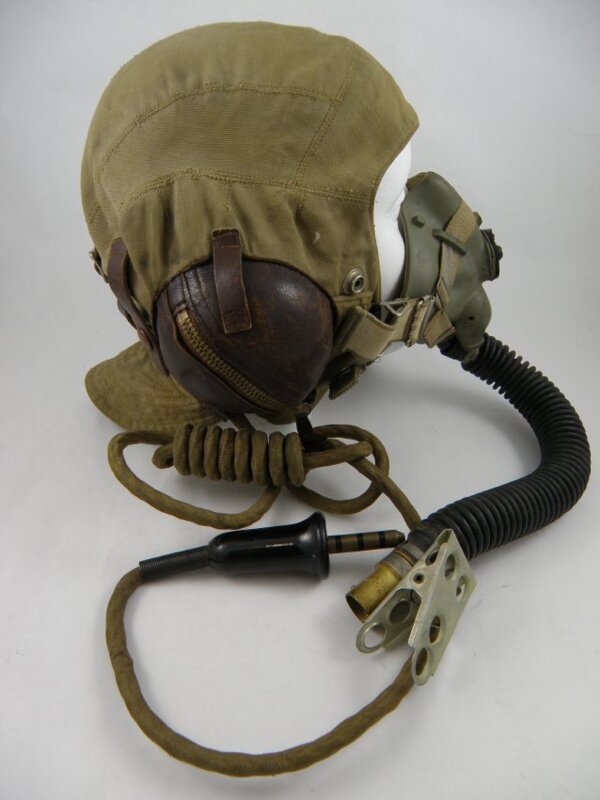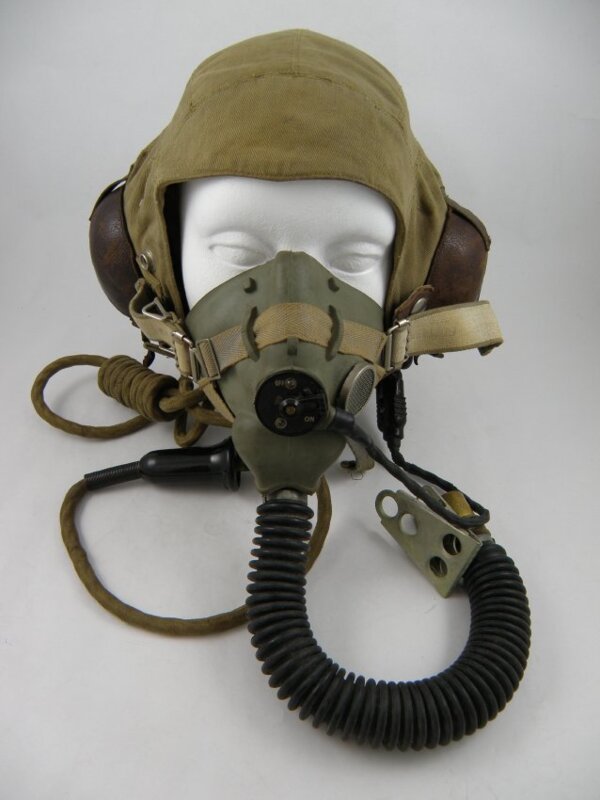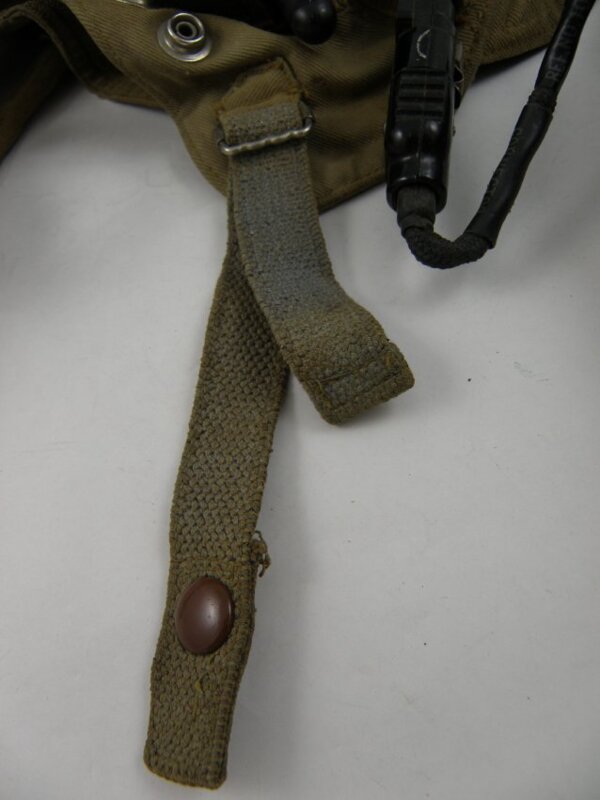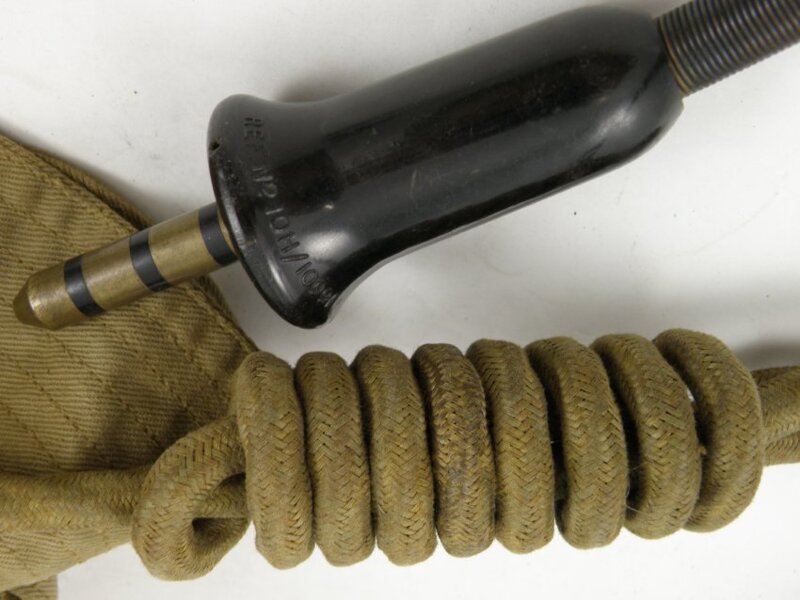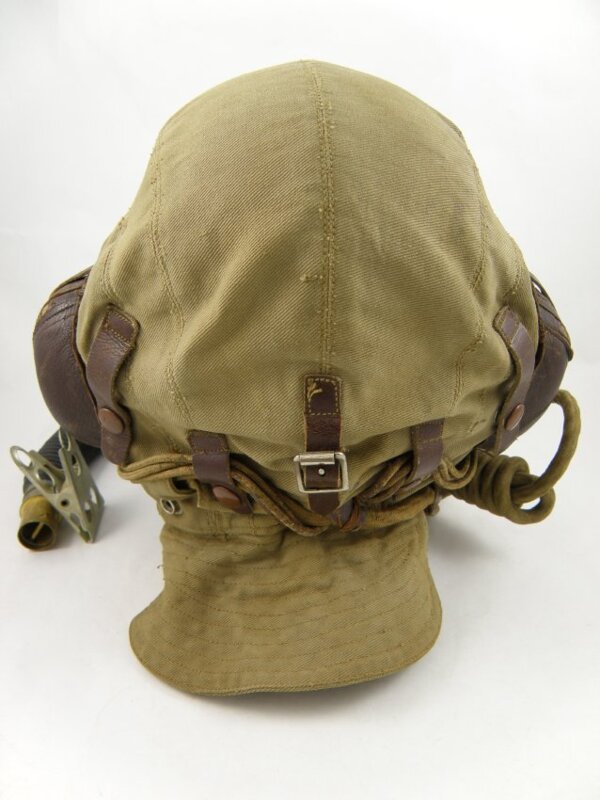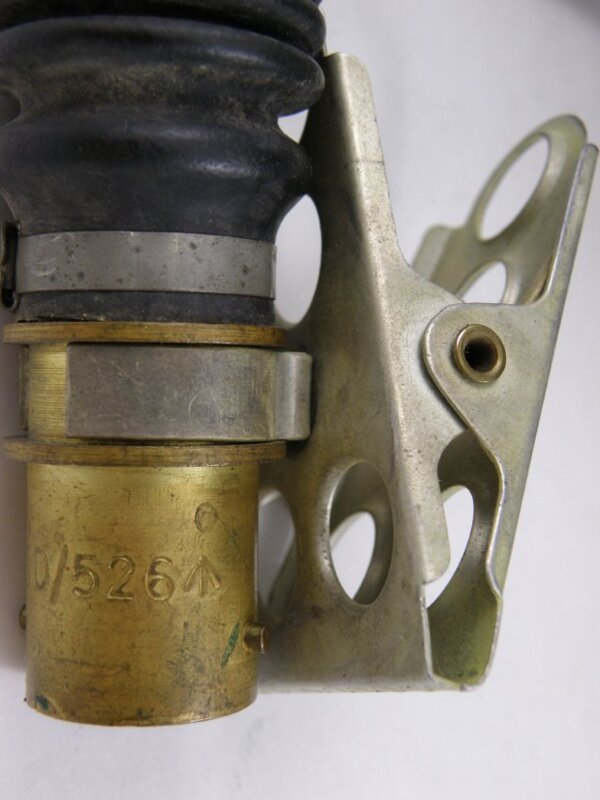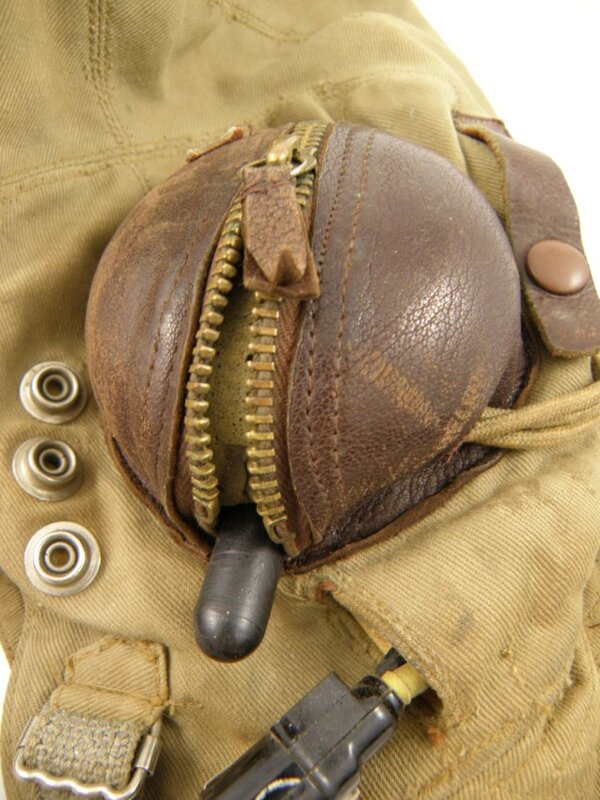Helmet
Item
Title
Helmet
Description
RAF Type D Canvas Flying Helmet, wired for receivers, microphone, and oxygen mask. Designed for use in desert climates and made of tan cotton twill canvas, and lined with ivory coloured satin. Tan velveteen sweat absorbing panels at the brow and chin flaps. This pattern incorporates a neck flap to protect the wearer from the desert sun. Brown leather zippered ear coverings over foam protected black bakelite 10A/13466 receivers on the outside and rolled padded ear cushions on the inside of the helmet. The zippers have brown leather pulls. A set of two leather tabs with brown press studs positioned on either side of the ear coverings and a single buckle leather strap at the rear, are positioned to secure goggles to the helmet. A grey canvas webbing chin strap with metal fasteners. Type 'H' green rubber oxygen mask with built-in Type 57 microphone. The mask is lined with white chamois leather, and has cotton web and elastic straps for attachment to a flying helmet. A 13 inch corrugated black rubber oxygen hose emerges from the bottom of the mask and ends in a brass plug with an attached alligator clip. The left hand cheek of the mask has a mesh covered valve to allow the passage of ambient air. Raised markings on the mask read, A 1-51(date of manufacture) 'MEDIUM' (size) and 'DETACH TUBE HERE' with an arrow indicating the location point. The microphone has a black plastic circular front with a rotating On/Off switch. An insulated lead emerging from the left hand side of the microphone ends in a black plastic plug 10H/14206 for attachment to the flying helmet. A black bayonet plug, REF.No.10H/10991 is secured by the small brown leather press studs at the back nape of the helmet above the neck flap.
Identifier
006.500.671
Provenance
The Type 'H' oxygen mask was developed from the earlier Type 'G', and entered RAF service in 1944. Its main advantage over earlier masks was in the fitting of the lightweight Type 57 transmitting microphone unit (actually the US designed MC253 adapted for British use.) The mask saw relatively little service during the Second World War, but was extensively used by RAAF aircrew in Korea, and proved so successful that it remained in RAAF and RAF service without modification until the 1980s.

